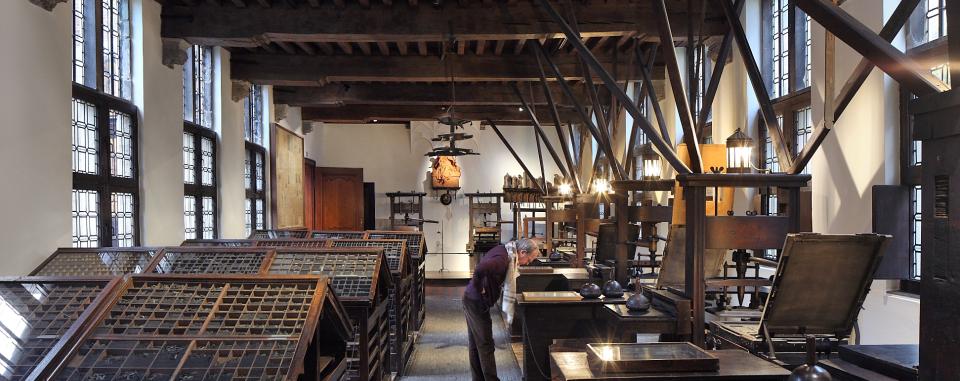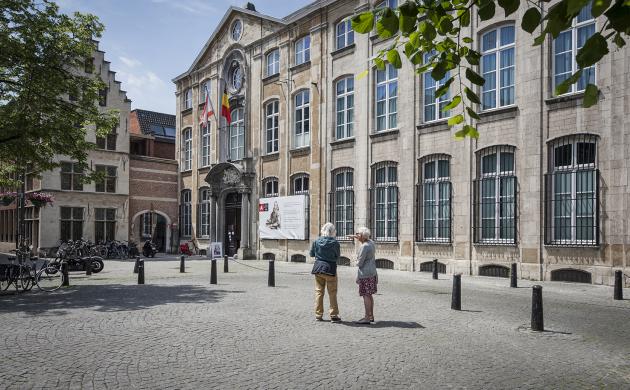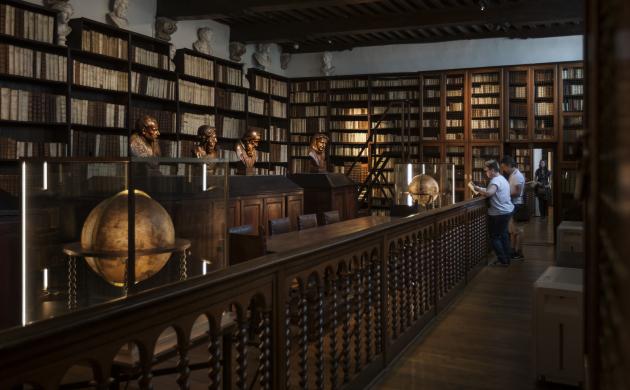The workshop
The printing shop was the beating heart of the business. It was first used in 1580. By that time, there were already at least 16 presses. The workforce numbered 56 men: 32 printers, 20 compositors, 3 proof-readers and one unskilled labourer. This was the situation in 1575. Plantin’s business was the largest of its kind in the world at this time.
The type cases
At the type cases on their wooden stands stood the compositors. Which case needed to be used? That depended on the alphabet – cursive, Greek, Hebrew, etc. – and on the size of the font.
The compositor would set the lead type in a composing stick to form a line. Successive lines were then assembled on a sturdy wooden board or galley. In this way, a column or page was gradually created. One forme consisted of a group of pages, the number of which (2, 4, 6, 8, 12 or 16) depended on the format of the book or publication. The forme was assembled in a chase that was put on the press. Wooden blocks held everything in place. The forme was now ready to print. After the whole process of printing and proof-reading was over, the compositor returned the letters to the type cases. A compositor could usually prepare one forme per working day.
The printing presses
The five presses against the outer wall are from the 17th or 18th century. They are still in working order and are all unique.
Here is how the actual printing process worked in brief. First, the forme, locked up in the chase, was inked on the press with semi-circular spheres: the ink balls or dabbers. The slightly moistened paper was then clamped between the frisket and the tympan. With a sudden movement it was brought into contact with the type. Finally, the printer removed the printed paper, which was hung up to dry. In the case of a ‘normal’ book, 1,250 sheets could be printed on both sides in a day on a single press. This required the printer to perform 2,500 impressions! An assistant helped him with his work.
The world's oldest presses
Plantin himself or his son-in-law Jan I Moretus may have been familiar with these two presses from around 1600. They have clearly had an eventful career: they are now incomplete and hence not in working order. These are the oldest preserved printing presses in the world.




